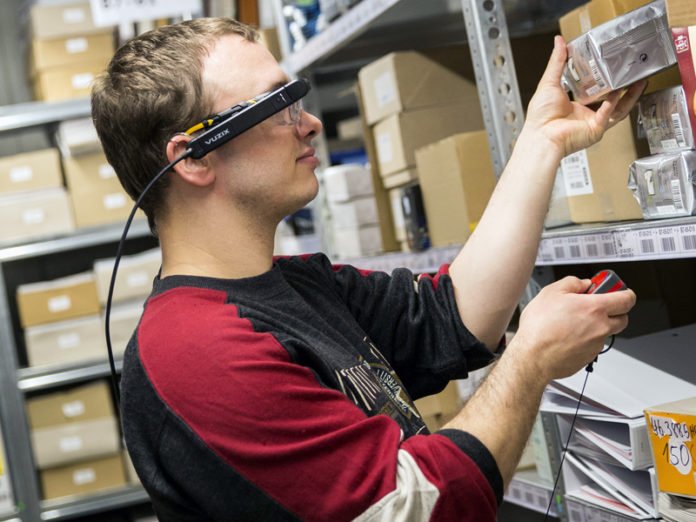A new visual information system developed by the Technical University of Munich (TUM) for hearing-impaired employees in logistics. It involves data glasses display information relevant to the work process in the employee’s field of view.
Scientists from worldwide are very keen in Augmented Reality, which combines the real and virtual worlds. But here, instead of concentrating on new apps, the researchers work on the application of the technology in logistics, specifically in picking.
Prof. Willibald Günthner said, “During picking, orders are processed by employees who retrieve particular goods from the storage facility which are then placed at another location. The employee has to know where to go and what products to take. Usually, this information is written on a piece of paper or shown on a display.”
“We wanted to achieve inclusion with the system. The system was intended for those both with and without hearing impairments.”
The researchers had the idea of replacing the paper and display solutions with data glasses. The advantage: Employees’ hands remain free, resulting in more freedom of movement; they are also led to the right destination visually. Günthner and his team have registered the technology under the trademark ‘Pick-by-Vision’.
The three-year research project “Work-by-Inclusion” took the development of the technology one step further: The researchers have realized a complete system for the inclusion of hearing-impaired individuals in a logistics operation.
Matthias vom Stein, a research assistant at the Institute said, “We also implemented several additional functions. Thus, for example, it’s possible to exchange pre-formulated text messages with others. This created a non-vocal communication platform.”
vom Stein said, “We’ve defined an open interface to the picking app based on Android. This means the system can also be used by other companies or institutes. Another advantage: The software can also be used with future data glasses, as long as the glasses use an Android operating system.”
“The hearing-impaired employees are completely thrilled because now they’re simply another part of the entire team. We really enjoyed the project, especially because the people there were so enthusiastic.”
Antti Matthias vom Stein and Willibald A. Günthner (2017). Work-by-Inclusion – Inklusives Informationssystem für die Kommissionierung mittels Datenbrille. ZWF Zeitschrift für wirtschaftlichen Fabrikbetrieb: Vol. 112, No. 10, pp. 670-674.
doi.org/10.3139/104.111798
